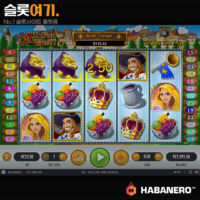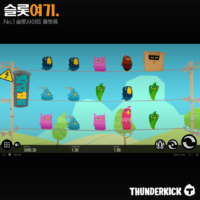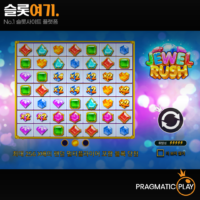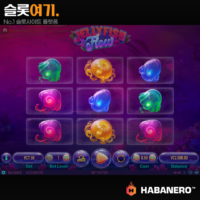“Don’t just look at the board, look at the flow”
In our last post, we looked at defensive strategy – the art of defendingbeyond just whether to call or fold, and taking advantage ofyour opponent’s offense.
But poker isn’t a one-handed game, especially if it’ s tournament poker.
This article builds on the second half of Part 3 of Harrington on Hold ’em, and introduces strategies for designing and running a tournament as if it were one long story.
Whereas before it was all about the cards in your hand, nowit’s about your stack, position, opponent, andtime.
1. My position and stack determine my strategy
“Same hand, different stacks, different strategies.”
It’s not just a theory – different stacks require us to play differently.
Example strategies based on stack size
| Stack situation | Strategy core | Example |
|---|---|---|
| Tight stack (50BB or more) | Multiple strategy features, psychological warfare advantage | Flop checkraise after a 3BB raise with A♠ Q♠ |
| Mid-stack (20-40 BB) | Managing blinds is important, leverage your position | Try to steal with K♣ T♣ in BTN |
| Short Stack (10-15 BB) | Need a simplified strategy with an all-in or fold focus | SB tries to go all in with 8♦ 8♠ |
It becomes more important to pick a strategy that fits your stack situationthan the hand itself.
For example, even if you’re holding the same A-Q suited hand, a 50 BB stack can play mind games after the flop by considering different numbers.
A 10BB short stack, on the other hand, might already have to decide whether or not to go all-in before seeing the flop.
The size of your stack is what determines the “toolbox of strategies” you have at your disposal.
2. Who are they – get to know their image and style
Just as important as your stack is the personality of your opponents. Because poker is a game of people.
Observation points
- Are you a frequent participant? → Loose style
- Do you engage less but hit harder? → Tight-Aggressive
- Do you go to showdowns often → Play less bluffing and more hand-centered
Based on this information, the selection will be different for the same hand.
For example, Q♠ J♣ could be a steal hand depending on the situation, or it could be a fold if you’re in a bad position.
However, if your opponent is loose and prone to folding, you have a chance to open strong and take the pot with the same hand. Conversely, if your opponent is the type of player who calls relentlessly, you may want to avoid playing the same hand.
3. Design the entire tournament – position, pace, and opportunities
A good poker player looks at a tournament like a “curve“.
This means looking at each hand as a point in the overall flow of the game, rather thanas an isolated event.
You don’t try too hard to protect your stack in the early going, and then you take one or two chances in the middle of the game to grow your stack significantly,
In the second half, you build on that advantage and go on the offensive.
Designing ahead of time when to stack, when to rest, and when to win,
This is the strategy that gets you into a tournament-winning flow.
3 Principles of Tournament Design
- Leverage your position: try more hands on buttons and cutoffs
- Read the table pace: know the pace and rhythm of other players and adjust to the flow
- Spotting opportunities: shortstack all-in moments, timing of steal attempts, etc.
Example: If there are more short-stacked players in the mid- to late-stage, I, as the big stack, can play more hands aggressively
4. Observe Yourself – Self-assessment of habits and flow
The book adds some fun advice.
“As you observe your opponent, so observe yourself.”
What mistakes do I repeat? When do I get too loose? Have I gotten too pissed off and lost a game?
Reflecting on your play and making adjustments is a key skill for long-term winning.
Many players try to analyze their opponents, but end up repeating their own mistakes.
For example, you may find yourself overly loose in BTN without realizing it, or your play becomes passive for the next 30 minutes because one bluff didn’t work. The ability to recognize and adjust to these flows is a far more powerful weapon than mere skill.
Poker is a game where the first person to read you wins.
Example checklist
- How many times did I open preflop today?
→ I can check if my positioning and hand selection was appropriate - What Percentage of Preflop Opens Induce Folds?
→ Determine if your steal strategy was effective - How many blind defenses have been attempted?
→ Check for repeated passive play - How often did your bluffs work and how often did they fail?
→ Make sure you’re not overly challenging, or leaning too far toward a passive-aggressive style - What Percentage of Hands Have Initiative After the Flop?
→ Check your ability to be aggressive after the flop - How many hands went to showdown and what their odds were?
→ Analyze whether you avoided unnecessary draws or had a reasonable showdown. - Have you ever judged a hand emotionally?
→ If you’ve ever been in a tilt, relive the moment. - Which opponents do I lose to repeatedly?
→ Diagnose your weaknesses against certain types of players - Have I repeated the same mistakes in the same situations?
→ Recognize your own patterns of weakness and use them to improve - Do you calculate your gain/loss before you play?
→ Make sure calculating expectations is a natural habit
They’re not just numbers, they’ re signals that tell you how you’re playing.
FAQs
A. Not necessarily, but the smaller the stack, the more advantageous simple choices are over complex strategies.
A. You can usually grasp their basic tendencies after observing about 10 to 20 hands.
A. Because defeat often stems from my routines and emotions. Only by reading myself can I read others.
Next Episode – What’s Scarier Than Facial Expressions at the Poker Table?
In the next post, we’ll move on to Part 4 of Harrington on Hold ’em. We’ll be covering how to read your opponent’s mind– the information you can get from the table.
- Physical Tell vs Betting Patterns
- Reading exercises for beginners
- Recognize your own unconscious behavior
Poker is, after all, a people’s game.
In the next installment, we’ll show you how to read your opponent’s moves.



![[Slot Review] Split Happens – Thunderkick](https://tabletalegames.com/wp-content/uploads/2025/01/Split-Happens-200x200.png)

